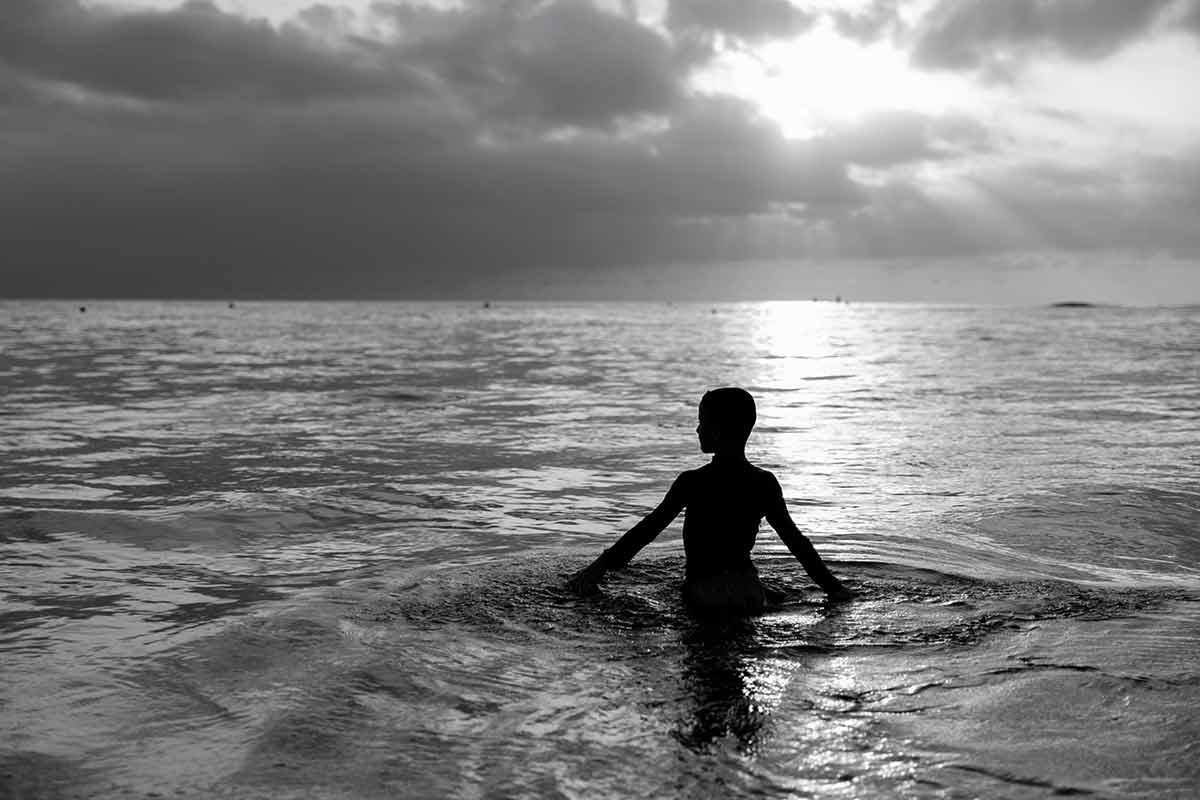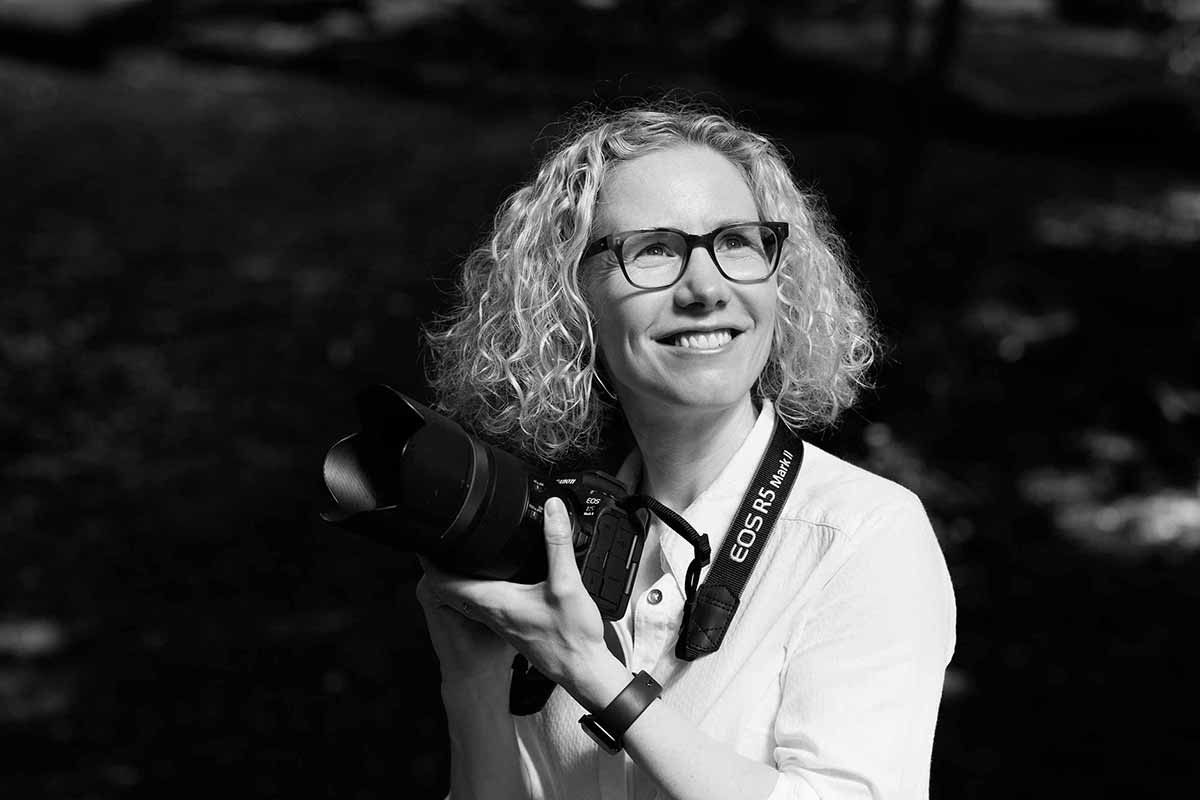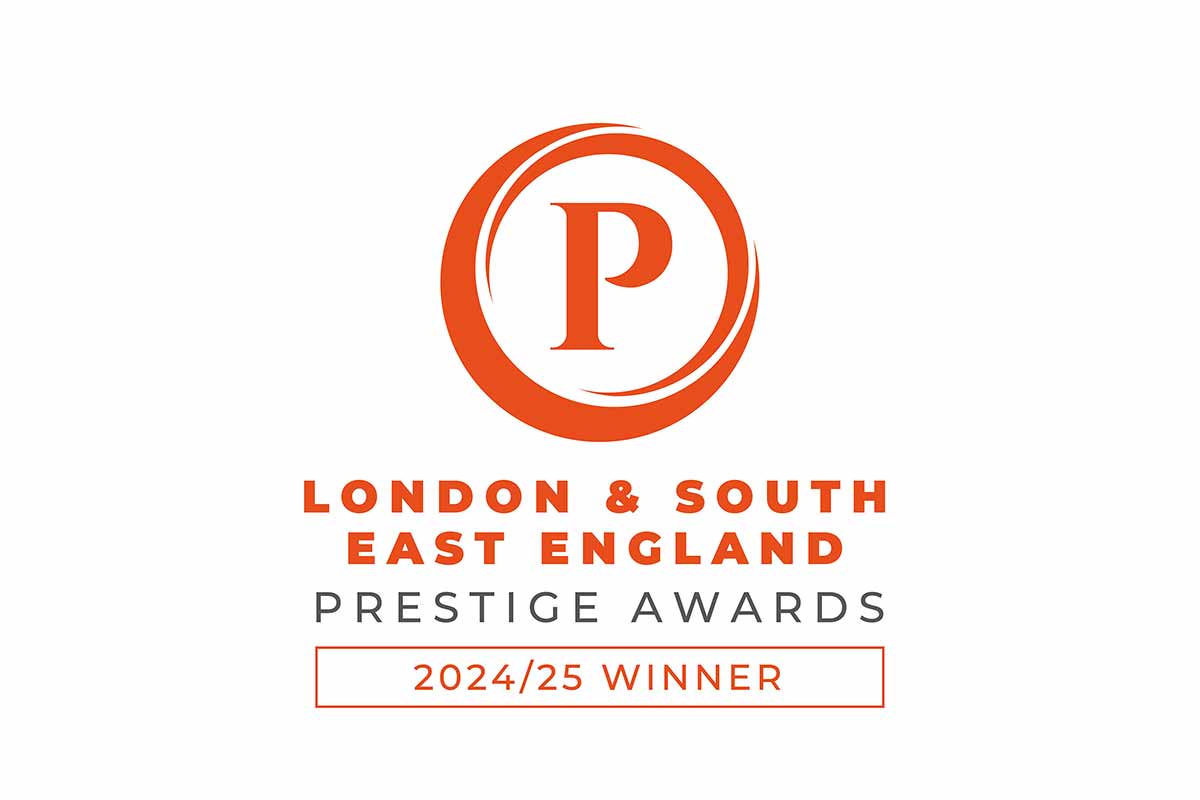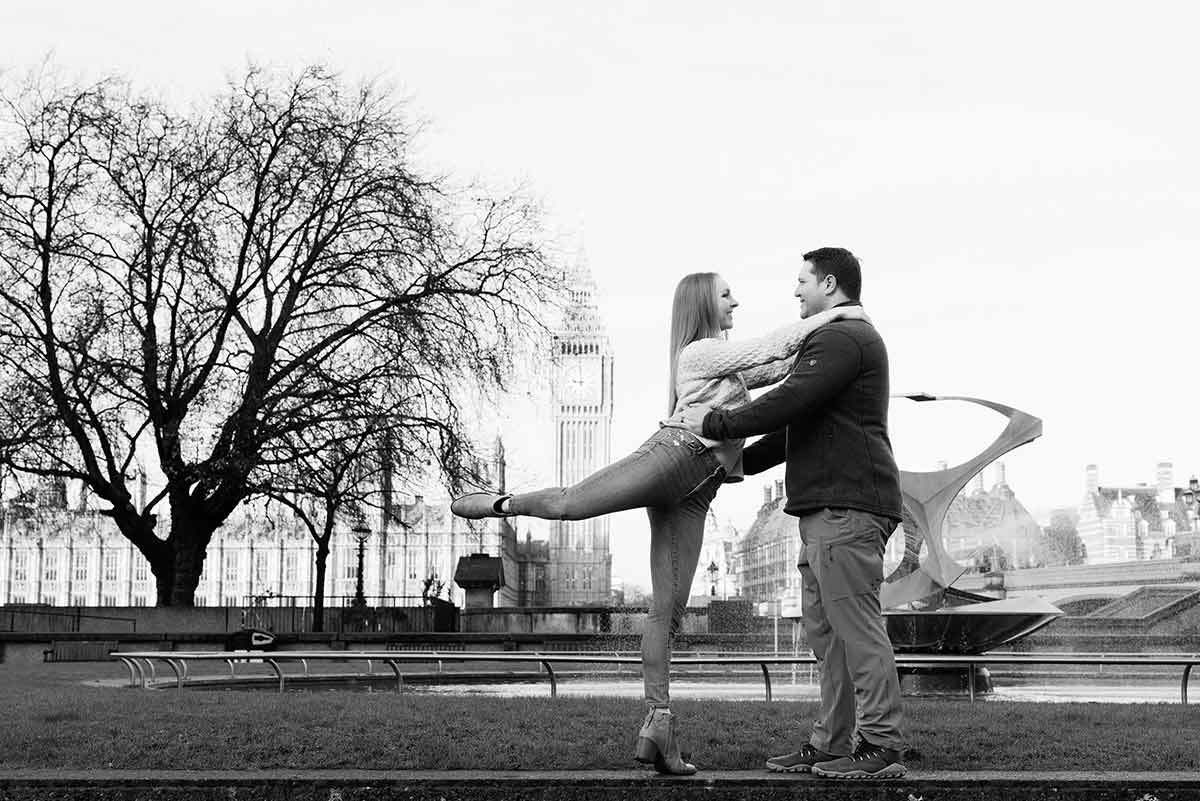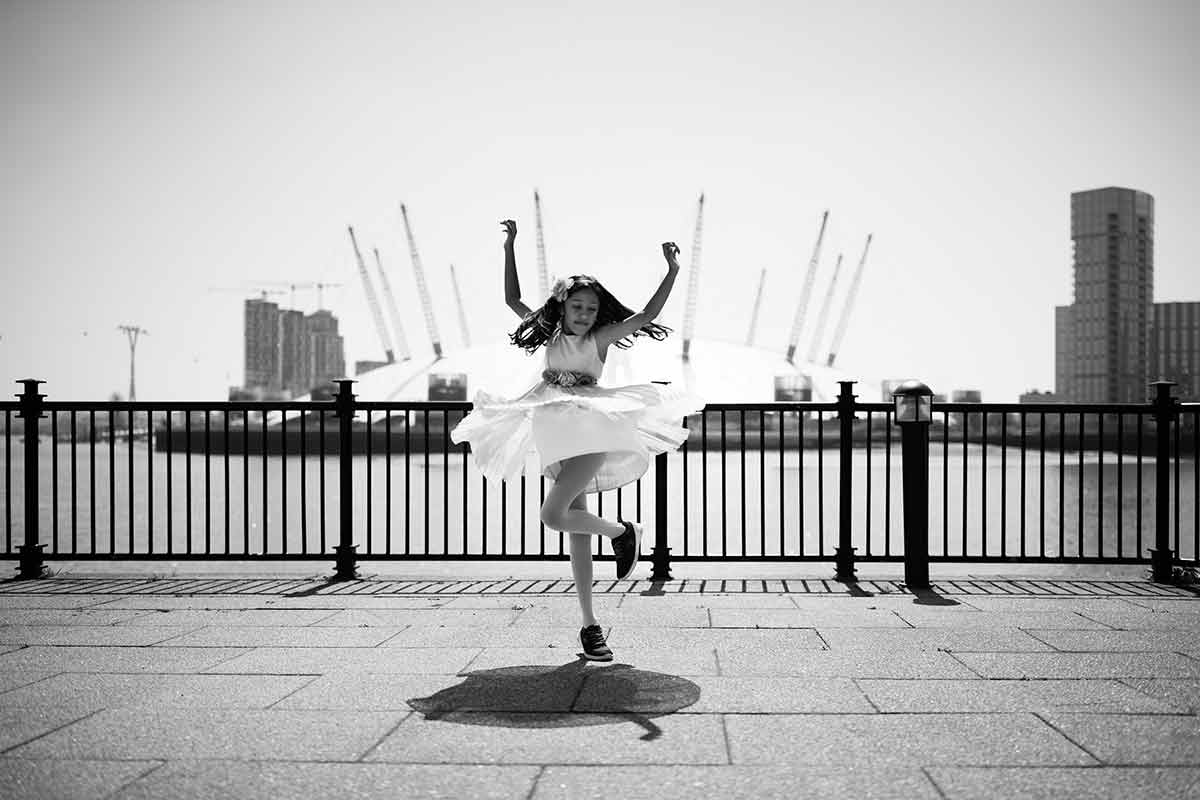Canon EOS R5 – First Impressions
I used the Canon EOS R5 for family portraits. What did I think?
Today is an exciting day: it’s the launch of the Canon EOS R5, Canon’s flagship professional mirrorless camera. I’ve been fortunate enough to have had the opportunity to test the Canon EOS R5 and I’m thrilled to report that Canon’s mirrorless system has come of age in the R5. I had high hopes of Canon’s first pro mirrorless body, but what I hadn’t expected was that it would blow my expectations away so completely that this is going to be the year that I’m going to make the full switch to mirrorless.
Below you will find an in-depth article that explores all the new features of the EOS R5 and also a video which takes you through them. The content is the same, so you can choose whether you prefer to read or to watch. Either way, make yourself a cup of tea and enjoy learning about all of the wonderful new things Canon has in store for us photographers.
Background
Back in 2018, I was involved in the launch of Canon’s EOS R system, it’s new camera system with mirrorless cameras and astonishingly good RF-mount lenses. This summer, I was chosen to test drive the R5 before it’s launch. It’s always such a privilege to use a pre-production camera and I had a great time putting it through its paces on some family portrait sessions.
For those of you who don’t know me, I’m a Canon Ambassador and family photographer based in London. I specialise in black and white photographs of babies and children, taken on location in their homes or the places they love to go. I’m not working in exotic locations or with professional models, I work in family homes, gardens, and public parks. These are the types of images that will be familiar to you from the pictures you take of your own family and friends and so will, I hope, be a useful indicator of how this camera could work for you.
My usual setup is two Canon 1DX Mark II cameras and an EOS R. I shoot with prime lenses most of the time and will carry the Canon EF 85mm f/1.4L USM, the Canon EF 35mm f/1.4L II USM, the Canon EF 50mm f1/.2L USM, and the Canon EF 24-70mm f/2.8L II for my EF cameras, and the RF 50mm f1.2/L and the RF 35mm f/1.8 IS Macro STM for my EOS R. I’ll pack the big zooms for certain situations (such as kids on horseback or water-skiing), but this is my normal day-to-day kit. These are the cameras and lenses that I’m comparing with when I talk about the Canon EOS R5.
For the test shoots with the Canon EOS R5 I mainly used the Canon RF 50mm f/1.2L and the Canon RF 85mm f/1.2L USM DS. For some pictures, I used the Canon RF 35mm f/1.8 IS Macro STM, the Canon RF 28-70mm f/2L, and (with an adaptor) the EF 70-200mm f/2.8L IS III USM.
All images in this blog were shot with pre-production hardware and firmware, and the settings and lenses for each image will be posted below the pictures.
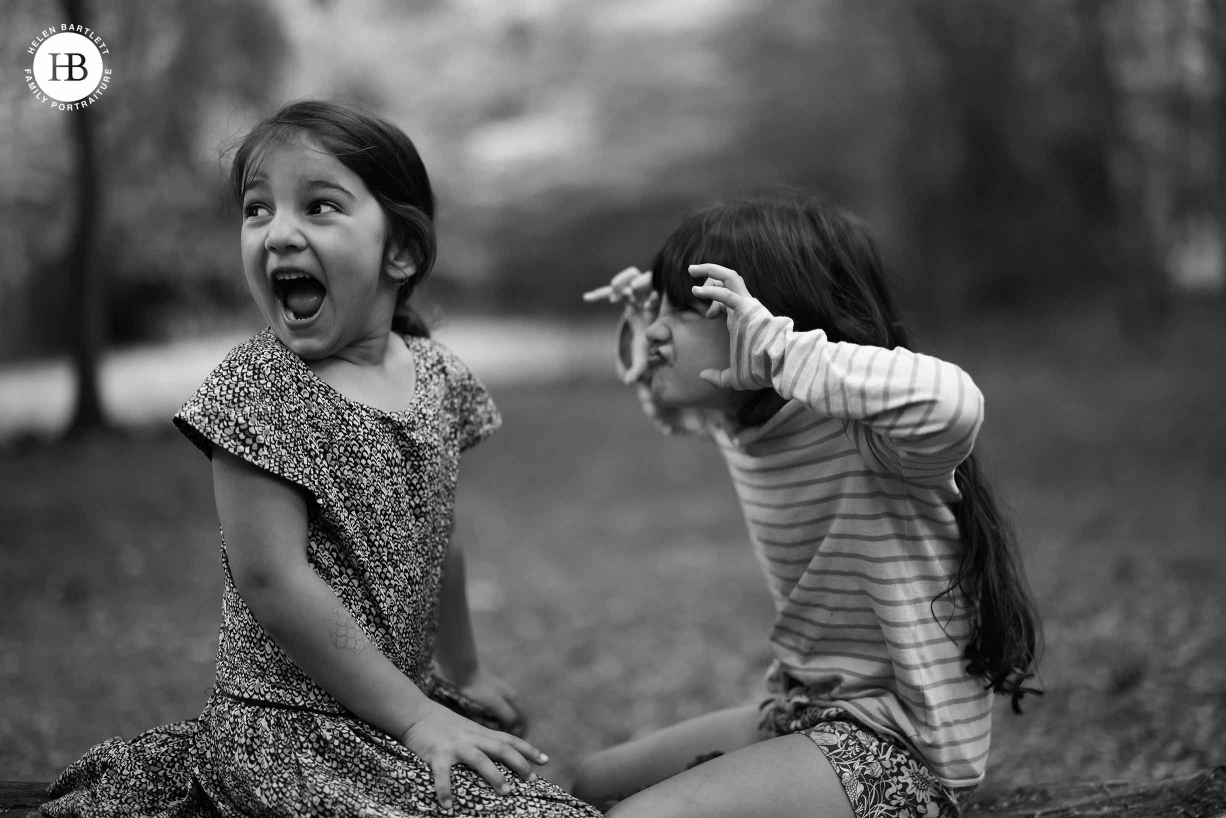
Superb autofocus means I never miss a moment. Canon EOS R5, Canon RF 50mm f/1.2 L USM, f/1.2, 1/800, ISO 1250

Taking pictures with the R5 is a joy. Canon EOS R5, Control Ring Mount Adapter EF-EOS R, EF70-200 f2.8L IS III USM at 88mm, f/8, 1/1,250, ISO 100
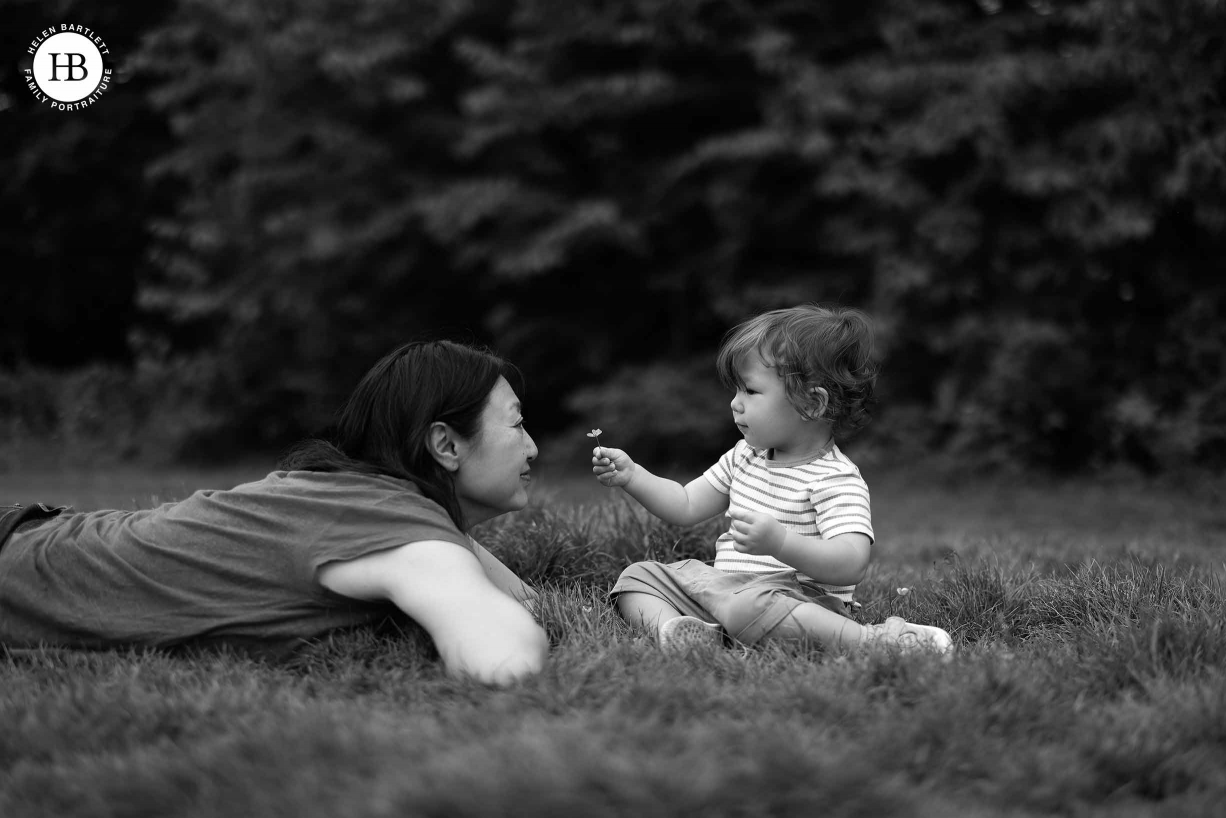
The quality of the files is incredible. Canon EOS R5, Canon RF 50mm f/1.2 L USM, f/1.4, 1/3,200, ISO 160
What’s new on the Canon EOS R5
I’ll give you a quick summary of the key features of the Canon EOS R5 and then we’ll dive into more detail on the aspects that are most important to my work.
First up, we have a new 45 megapixel sensor, placing the R5 close to the 50.6 MP Canon EOS 5DS in terms of resolution. The high resolution sensor gives us fantastic tonal range and even more options for cropping images in post-production.
Low-light performance has improved, and the native range is from ISO 100-51,200. There is less noise compared to the EOS R, despite the higher resolution, which is an amazing achievement for Canon and will allow more flexibility for those of us who regularly shoot indoors, whether for client work or just photographing our families. Being able to take beautiful pictures at very high ISO settings and make big prints from them is something that will make a material difference to me on a daily basis. Dynamic range has been improved too, giving us more detail in those all-important highlights. The quality of the files from this camera are simply staggering, and the tonal range is an absolute delight.
If, like me, you like to shoot in fast bursts then you will be thrilled with the improved frame rate of the Canon EOS R5 over the Canon EOS R. As someone who shoots with an EOS R alongside an EOS 1DX Mark II, I have often wished I could shoot faster on the mirrorless system. The R5 solves that with a fantastic 12 frames per second with the mechanical shutter, or a phenomenal 20fps with the electronic shutter, both of these with full autoexposure and autofocus tracking. This is really quite something with the 45 megapixel files. Kids jumping on the bed or out of trees? Not a problem with this system, its fast enough to handle it all. Also, like the 1DX Mark III, the R5 also offers the option to shoot HEIF format files: essentially, a more modern version of the old JPEG image format that give you more colour fidelity and dynamic range in similar file sizes.
The Canon EOS R5 also includes 5-axis in-body image stabilisation. This is something I didn’t realise how much I wanted until I tried it. As someone with shaky hands who tries to keep above 1/125 at all times, I suddenly found myself taking sharp shots at 1/30 and below. Testing the camera on a low-light shot of a tulip, I was able to produce sharp images 1/10, I truly would not have believed that possible.
The other big news of course is the video upgrades. I’ve been shooting my recent YouTube videos with my EOS R and have been thrilled with the ease of use and the high-quality results. The Canon EOS R5 take it all a step further, adding an incredible 8K resolution and other high quality options.
I’m going to stop here on video though, it’s not my area of expertise, I didn’t test it, and in all honesty I’m not in a position to get the best out of this aspect of the R5 as I’m such a beginner. So best to refer to the Canon website or one of my other talented ambassador colleagues for all the news on the cool video stuff. Safe to say, it’s going to be amazing.
The other area which I haven’t explored at all are the new communication tools: the Canon EOS R5 has built in Wi-fi and Bluetooth Low Energy technology. I never stream my pictures when I’m working, but these tools will be very useful for sports photographers, and the GPS function will come into its own for those shooting landscapes or anyone who needs to know exactly where an image was taken. I expect I will use the remote control through the Canon Camera Connect app, but at time of writing I haven’t explored this. Again, check the Canon website for more information.
So, instead of looking at what I didn’t play with, let’s look at what I did. What features did I love on the new Canon EOS R5 and how do I think it will transform my, and potentially your, photography?

It’s been a pleasure to shoot with the Canon R5. The body feels reassuringly solid and the handling is instinctive.
Handling
On first look, the Canon EOS R5 looks very similar to the EOS R. It’s a similar size and weight. The multi-function bar has gone (which personally I’m sad about as I liked it, but I know it wasn’t universally popular). It’s been replaced with a multi-controller joystick like those on many of Canons DSLRS. Like the EOS R, the R5 has a vari-angle screen which I’m pleased to see on this pro body, as I love to use mine on the EOS R to shoot from new and interesting angles. You can also program not just the main dial, the quick control dial, and the ring on the front of the lens, but also the quick control dial on the back so you haven’t lost a customisable function with the removal of the multi-function bar.
The buttons are in slightly different positions to the EOS R, but it all feels very instinctive in my hands. The body feels very solid, it’s the same magnesium alloy shell as the 1DX Mark III and has weather sealing to a similar level as the Canon EOS 5D Mark IV. The shutter durability has also been improved and that’s good for around 500,000 shots, which even at the rate I take pictures will take a while to get through.
There are dual card slots in the Canon EOS R5. Personally, I’ve never felt the need to shoot onto two cards simultaneously, but this will be a welcome relief to all of the photographers who prefer to have that option. The R5’s two card slots take different types of card: SD cards in one and CFExpress cards in the other. New card formats can add a significant additional expense when upgrading camera systems, but I’ve been incredibly impressed with the CFExpress cards that I’ve tried, the speed is phenomenal. The CFExpress cards that I tried have a write speed of 1,200 MB/s compared to the 120MB/s on my current SanDisk Extreme CF cards. Technology moves on and we must move with it. This new camera system is a world away from the Canon EOS 10D and two 512MB CF cards I bought when I started my business in 2003, and when we think what we can do with the new tools it makes the upgrades worth every penny.
The Canon EOS R5 has a new longer-life battery, but it’s also compatible with the LP-E6 batteries that many of us have for our EOS R and 5D-series cameras. I found that the new battery was still going strong after a morning shooting kids running around, I didn’t need to use any of my backups batteries when testing the kit
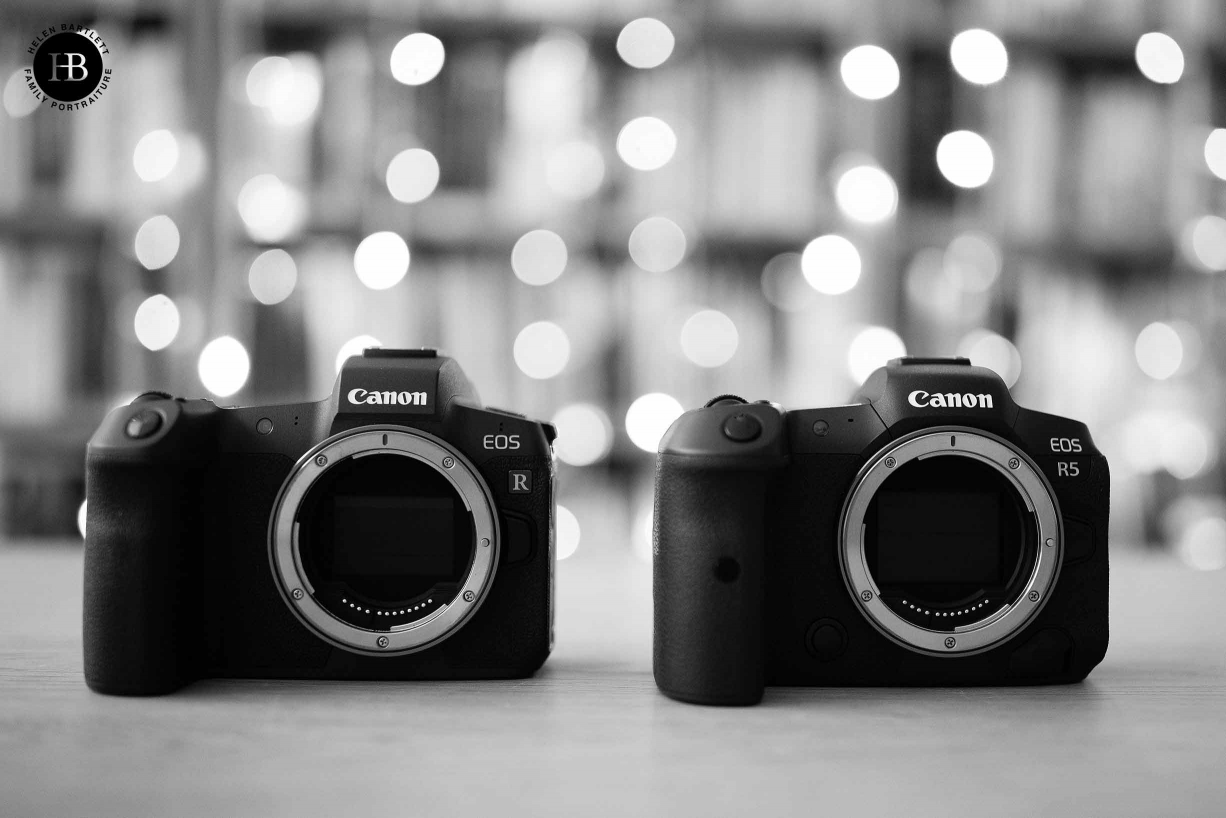
The Canon EOS R and EOS R5 side by side.
Customising your R5
Like the EOS R, the Canon EOS R5 is very customisable and you can set it up to perfectly suit the way that you like to shoot. This customisation is invaluable because, combined with the R5’s superb responsiveness, it means that it gets even closer to working as an extension of my eye and helps me to capture fleeting moments with ease.
I’ve set mine up to have:
- Shutter speed on the main dial by the shutter button.
- Aperture on the quick control dial at the back of the top plate.
- ISO on the quick control dial on the back.
- The control ring on the lens switches between focus modes. This is a fantastic addition as I find I’m switching between different AF methods for different types of shooting more and more, for example using the face and eye detection for portraits and some of the wider area modes for action shots. Having the ability to switch mode without going into a menu is speeding up my shooting process no end.
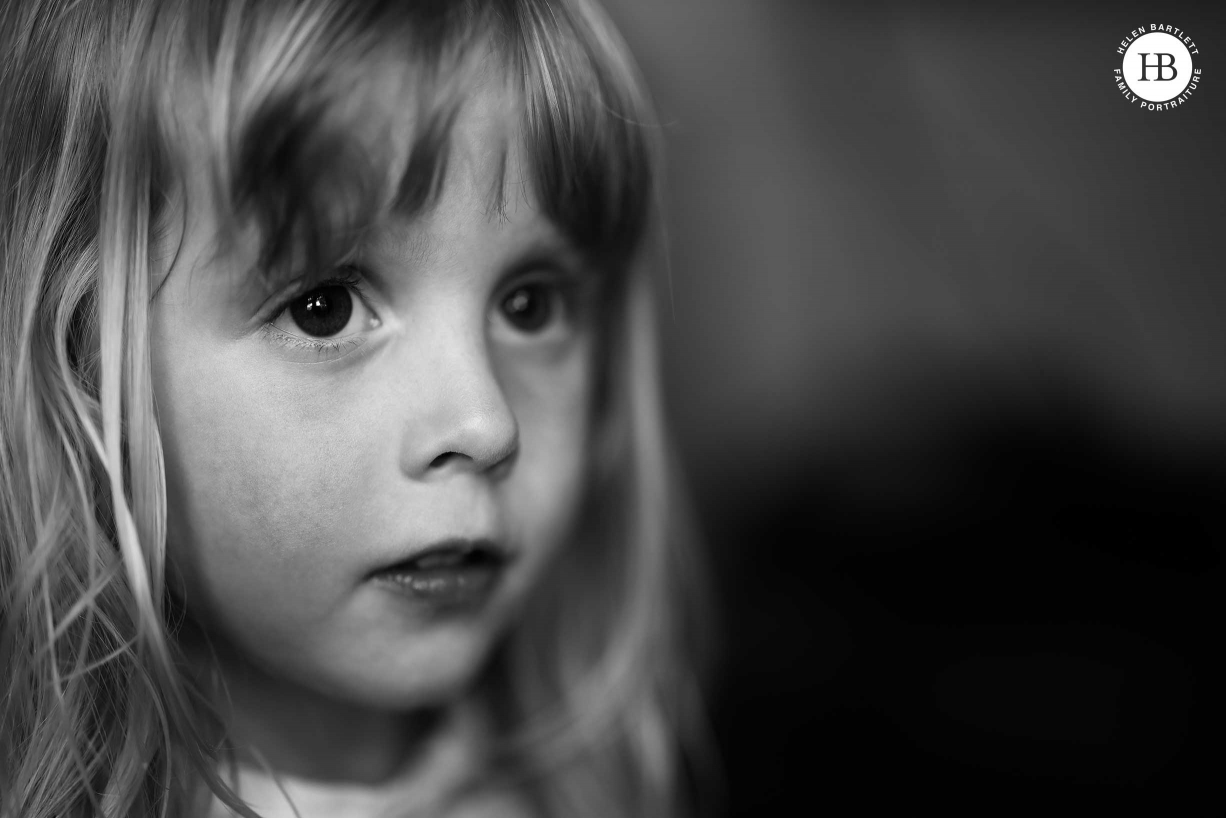
The R5’s customisation options make portrait photography a joy. Canon EOS R5, Canon RF 50mm f/1.2 L USM, f/1.2, 1/320, ISO 160.

The quality of the files is astounding. Canon EOS R5, Canon RF 50mm f/1.2 L USM, f/1.4, 1/80, ISO 100.
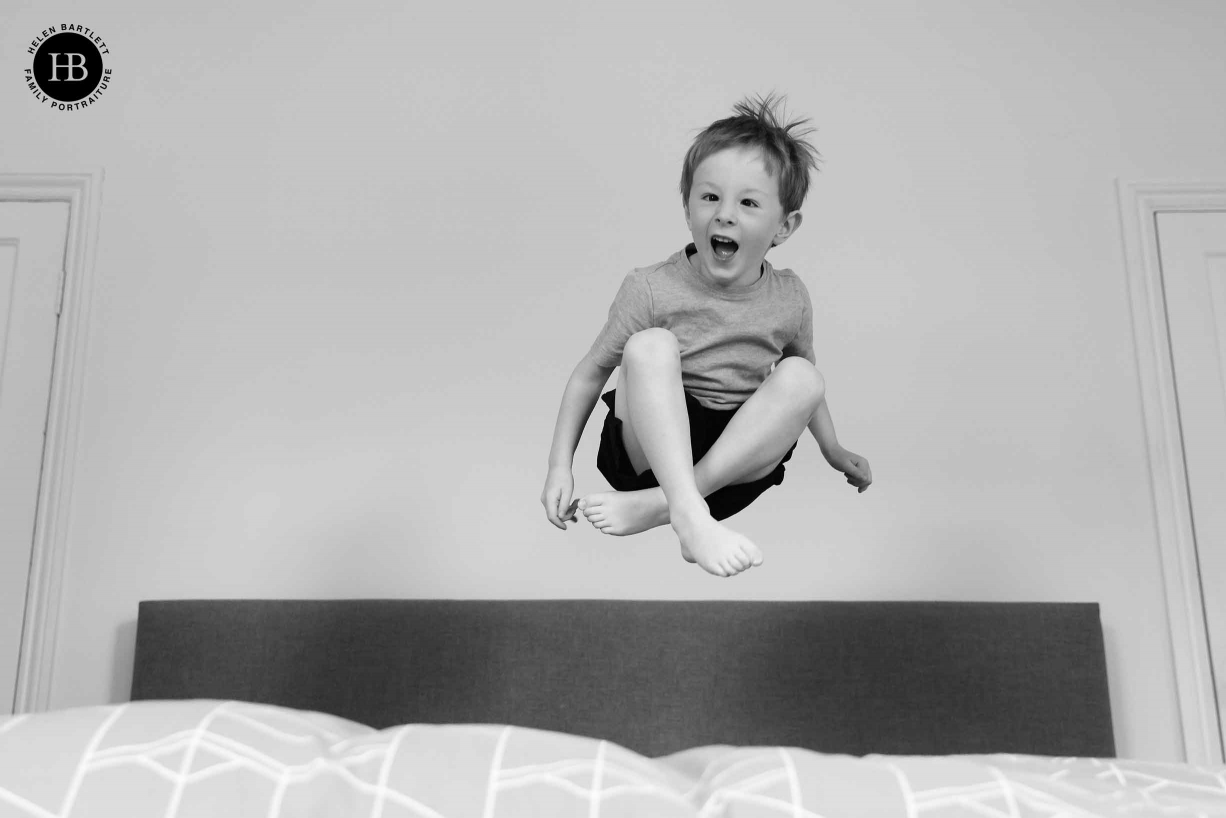
Face tracking surpassed my expectations. Canon EOS R5, Adaptor, EF 24-70 f2.8L II USM at 38mm, f/2.8, 1/1000, ISO 2500.
Autofocus
Autofocus is vital for my work. I photograph kids running around, jumping on things or over things, moving erratically, and often in situations where there is very little light such as indoors or in dense woodland. I need to know that I can trust the autofocus on the camera to get the shot, whatever happens in front of me. As a photographer who has been shooting with Canon’s flagship 1-series bodies for over a decade, my standards are high but I was blown away by the performance of the Canon EOS R5.
I was thrilled to see that Canon have included four custom autofocus modes on the R5 as I use these a lot on my 1DX Mark II. The autofocus modes are:
- Case 1: a versatile multi-purpose setting which I use as standard.
- Case 2: continuing to track subjects ignoring possible obstacles, which is perfect for running through the trees or playing in bubbles.
- Case 3: instantly focus on subjects entering AF points, which is fabulous if you set up a shot and wait for the kids to appear in it.
- And my personal favourite when working with kids Case 4: for subjects that accelerate or decelerate quickly, perfect for playing football.
I find these settings hugely useful and expect to use them a lot. If you don’t want to set these yourself you can use the Auto mode which analyses the scene and sets one of the modes automatically.
Canon has also included deep-learning technology in the R5 to better track people and animals, the results of which were clear to see. Face detection on the EOS R has been getting better and better with firmware updates and it feels like it has truly arrived on the new R5, it’s incredible. Using face and eye detection on the R5, I can let the camera do a lot of the work. Face tracking even worked when photographing a child jumping on a bed, which feels incredible to me.
I didn’t try animal tracking because I don’t have a pet, but the Canon EOS R5 uses deep-learning technology to better track dogs, cats, and birds by detecting the body, face, or eye of the subject. I’m looking forward to seeing what nature photographers do with this.
There are four key areas for me when it comes to judging autofocus:
- How well does it focus at wide apertures?
- How well does it focus on fast-moving subjects?
- How well does it focus in low light?
- How well does it track faces?
The R5 performed brilliantly in all of these areas. Shooting at f/1.2 was so easy, even with moving targets that, if anything, I had to remind myself not to leave the camera set to f/1.2 all the time. While testing, I did get carried away and take a few shots that would definitely have benefitted from a smaller aperture for depth of field. It was just amazing to be able to stick it on f/1.2 and not worry. I was absolutely confident that the camera would track focus perfectly and the joy of the electronic viewfinder is that you can see that it’s all coming together perfectly. If you need to check then both the screen on the back and the EVF are such high resolution that you can check the sharpness of an individual eyelash before moving onto the next picture.
Moving targets were no problem at all and being able to quickly shift between the different focus modes made it so easy if, for example, the child I was photographing broke into a run and a jump. As you can see here its spot on as this boy jumps and that was shot at f/1.6
The R5’s autofocus performance in very low light was harder to test as due to the current pandemic and lockdown restrictions in place when I had the R5 I wasn’t able to photograph in my clients’ homes. However, in dense woodland which can be tricky with dappled sunlight and high contrast backgrounds, the camera performed perfectly.
Face recognition is something I haven’t used much on the EOS R although it has been getting better and better with recent firmware updates. I think I will use it a lot on the EOS R5 and I love the idea of being able to use it in conjunction with the vari-angle screen to get some really unusual and interesting compositions.
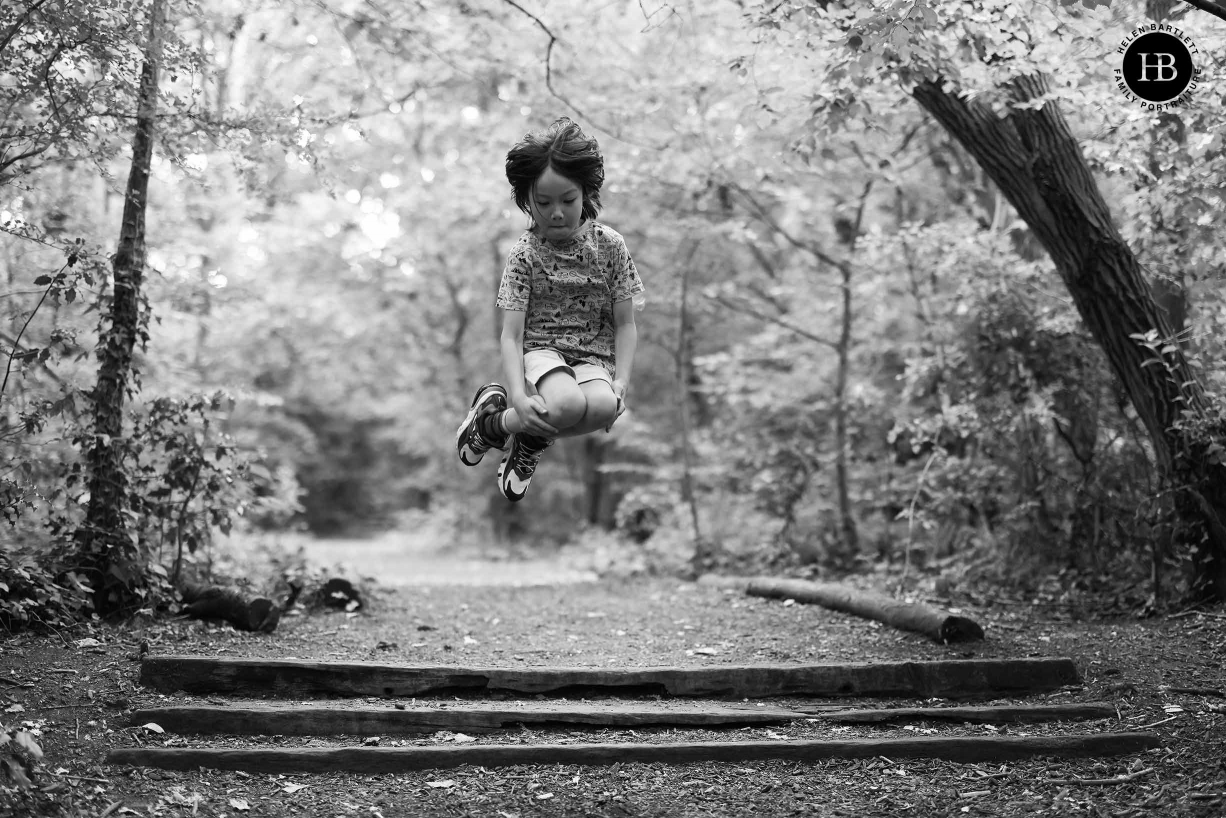
Focus is spot on with fast-moving subjects. Canon EOS R5, Canon RF 50mm f/1.2 L USM, f/1.6, 1/1,600, ISO 1,000.
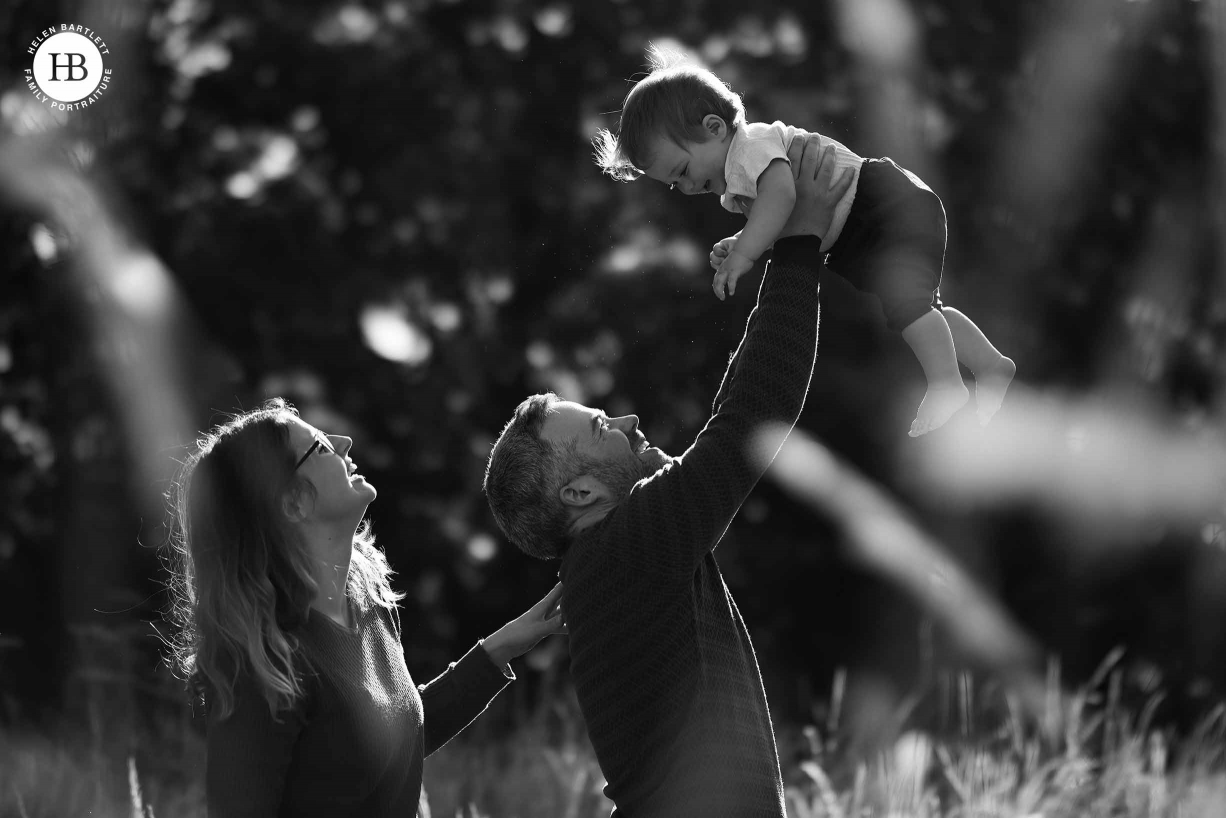
Backlit situations and shooting through long grass are no problem. Canon EOS R5, Canon RF85mm f1.2L USM DS, f/1.6, 1/2,500, ISO 100.

Face recognition is fast and accurate. Canon EOS R5, Canon RF 50mm f/1.2 L USM, f/1.4, 1/320, ISO 1,250.
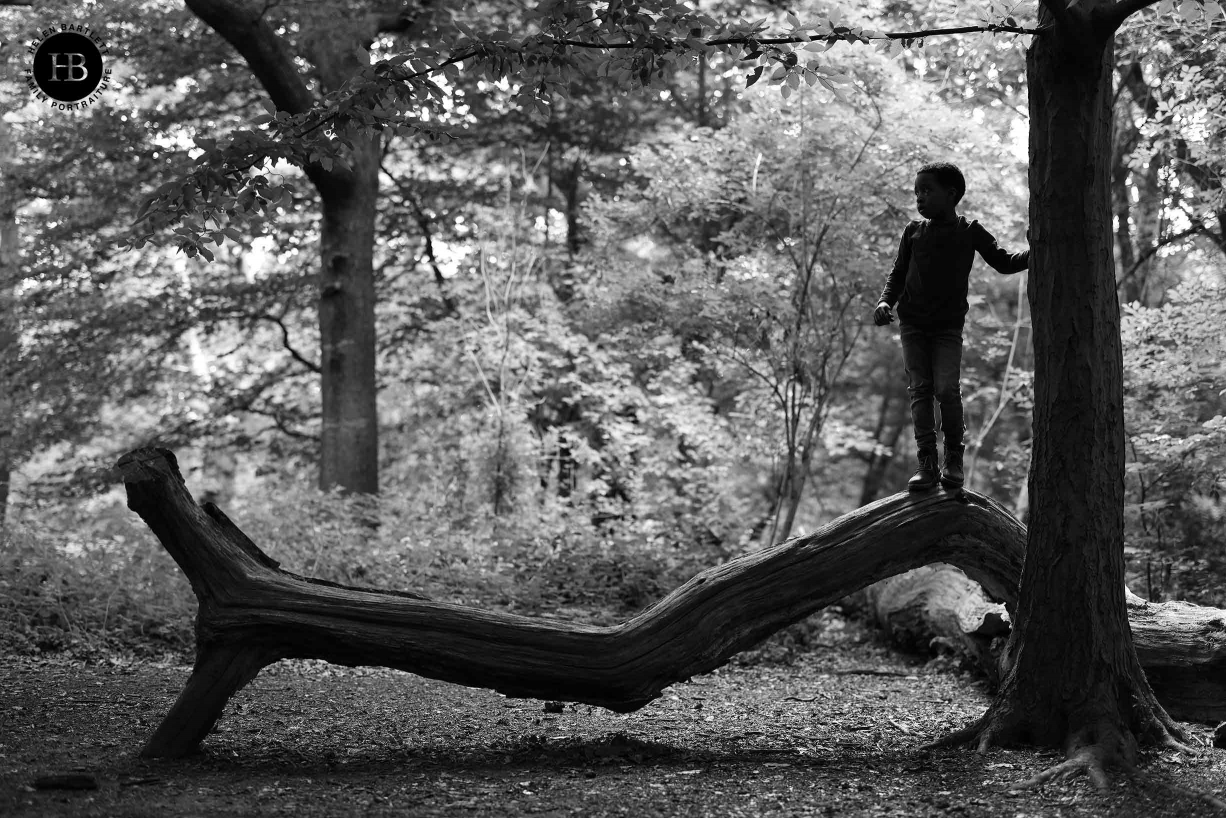
I love the new multi-controller joystick and 5,940 autofocus points on EOS R5. Canon EOS R5, Canon RF 50mm f/1.2 L USM, f/1.8, 1/400, ISO 800.
The multi-controller joystick
The one thing I didn’t like on the EOS R was the lack of a joystick. Yes, the touchscreen was great for moving the focus around but, when I was using longer lenses, I missed the ease of moving the focus point with my right thumb. After years of using 1-series cameras, it feels instinctive to me to move the focus points like that. So, I was thrilled to see the joystick on the back of the Canon EOS R5
Even better, the multi-controller joystick is customisable. You can change its sensitivity so it can move the focus points around fast, really, really, fast. This is important as the focus area on the Canon EOS R5 now covers the whole of the visible image area with 5,940 autofocus points. You can shift it around so quickly and it’s easy to put that AF point in the corners or other places to create interesting and dynamic compositions. All of these options allow us to be more creative with our photography.

This image is pin sharp at 1/30, showing the value of in-body image stabilisation. Canon EOS R5, Canon RF 50mm f/1.2 L USM, f/3.5, 1/30, ISO 320.
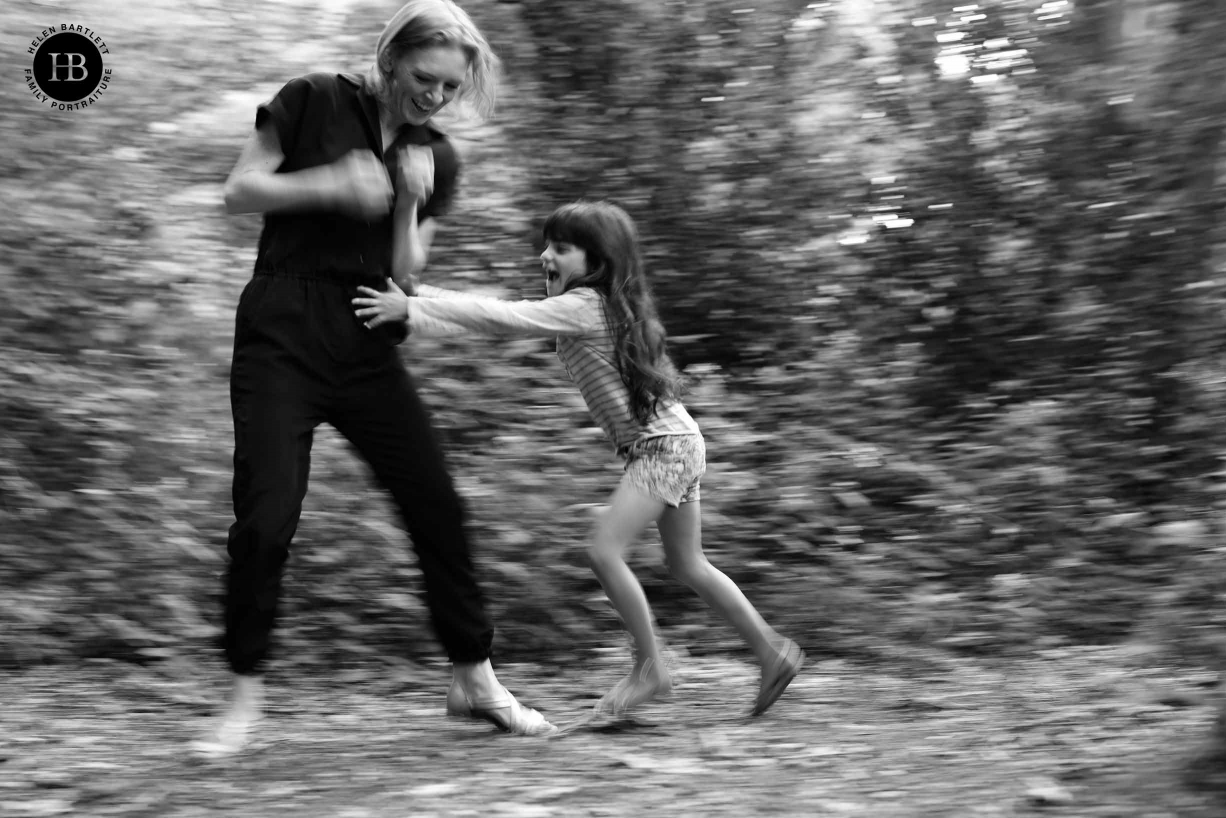
This image with the one above show how the new in body image stabilisation will give new creative possibilities. Canon EOS R5, Canon RF 50mm f/1.2 L USM, f/3.5, 1/30, ISO 320.
In-Body Image Stabilisation
Canon has long had superb image stabilisation in some of its lenses, such as the popular Canon EF 70-200mm f/2.8L IS III USM or my beloved Canon RF 35mm f/1.8 Macro IS STM. Image stabilisation allows us to hand-hold shots at much slower shutter speeds and still shoot sharp images without camera shake, and now Canon has added in-body image stabilisation to the R5 to bring the benefits of image stabilisation to all of our lenses.
By placing this function inside the camera body, Canon has ensured that, regardless of whether the camera is working with an IS-containing lens or not, we have access to a steadier camera and can take pictures that would have been impossible before.
When the Canon EOS R5 is working in conjunction with an IS-containing lens, this can reduce camera shake to approximately 8 stops. That’s absolutely extraordinary when you think about it and will open up so many new possibilities for us – suddenly those candle-lit weddings won’t feel so daunting, or for portrait photographers like me, those moments when you find yourself playing a game inside a tent or a den on a dark rainy day. Subject movement can still be an issue obviously but choose your subject carefully and the opportunities will be incredible. I’m already thinking of hand-held slow shutter speed pictures of waterfalls on landscape trips or the creative use of blur in portraits, it will be so fun to try these new options out.
Some of the best uses will probably be when we least expect them. For example, preparing for a panning shot during a family game, I dropped my shutter speed on my Canon EOS R5 down to 1/30. Normally at this point I would wait for the running to start when I would take my picture. But instead I took shots at 30th of a second of the moment beforehand and they are pin sharp. Changes like this mean I can take pictures I might never have thought of before, it can only improve my photography and yours.

While quality does drop at very high ISO settings, it’s still a big jump from previous cameras. Canon EOS R5, Canon RF85mm f1.2L USM DS, f/3.2,1/2,500, ISO 16,000.
High ISO performance
Unfortunately, as I was almost exclusively shooting outside for these test shoots I didn’t have the opportunities I normally would have for shooting very low-light Images. I did have a bit of a play though and I can report that ISO 5,000 is absolutely lovely with beautiful tone and detail. I did try a couple of shots at ISO 16,000 and while there is a loss of quality at such high ISO it’s just about useable and at a push I’d go that far on a shoot which is a full stop above ISO 8,000 which is where I don’t like to go beyond at the moment. I often print my pictures at 24” across so this is my benchmark for quality.

The focus here is spot on, even shooting through bubbles where high contrast areas obscuring the subject’s face can often cause problems. Canon EOS R5, Canon RF85mm f1.2L USM DS, f/1.2, 1/8,000, ISO 320.
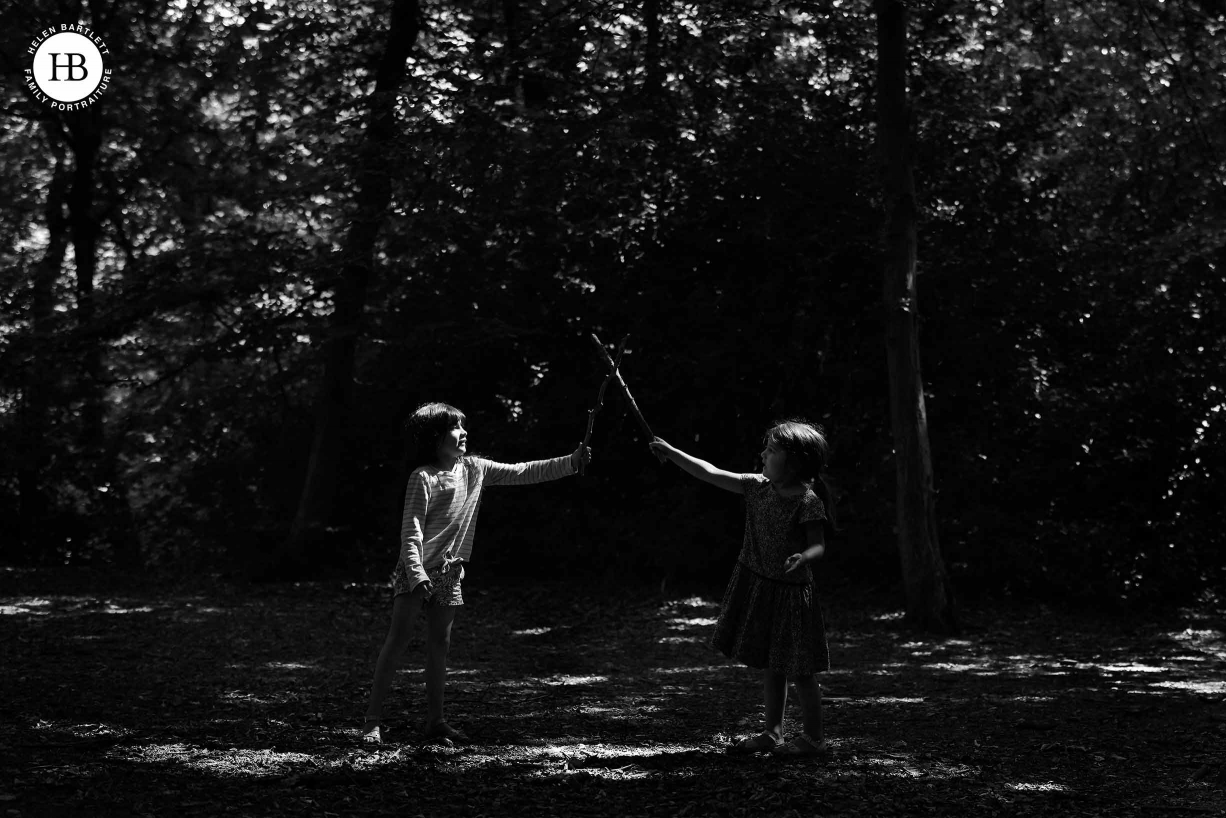
The camera worked flawlessly in very high contrast dappled light. Canon EOS R5, Canon RF 50mm f/1.2 L USM, f/2.2, 1/6,400, ISO 2,000.

I love the sharpness of the detail in the files. Canon EOS R5, Canon RF85mm f1.2L USM DS, f/1.2, 1/500, ISO 100.
Electronic viewfinder
The electronic viewfinder, which was one of the elements of the EOS R that got me most excited, has had a superb upgrade in the Canon EOS R5. It’s higher resolution, approximately 5.7 million pixels compared to the EOS R’s 3.69 million, and has double the display frame rate which makes for smooth, lag-free tracking of subjects.
I love the EVF because I find it a joy to have my viewfinder in monochrome as that’s how I shoot all my work. Being able to see the changes in exposure as I go along makes shooting more instinctive. I think this has been a real game changer in the photography world these last few years since we’ve begun to see the rise of mirrorless cameras. As photographers, we are all getting more confident with complex lighting situations as we can see the impact of our settings before we take the shot.
You can review pictures in the viewfinder if you wish, which can be helpful if you are on a shoot and want to check something but don’t want your clients to crowd round to see the image on the back of the camera. I find this very helpful when working with children as once they have seen one picture on the back of the camera they want to see every picture on the back of the camera! The high resolution means you can check fine detail very easily.
The EVF viewfinder also allows tools such as focus peaking to be used, where you can set the viewfinder to highlight the in-focus areas in red which helps you to judge the depth of field. It’s great for landscape photographers and I found it to be amazingly useful when shooting with tilt-shift lenses which is something I love to do on occasion.
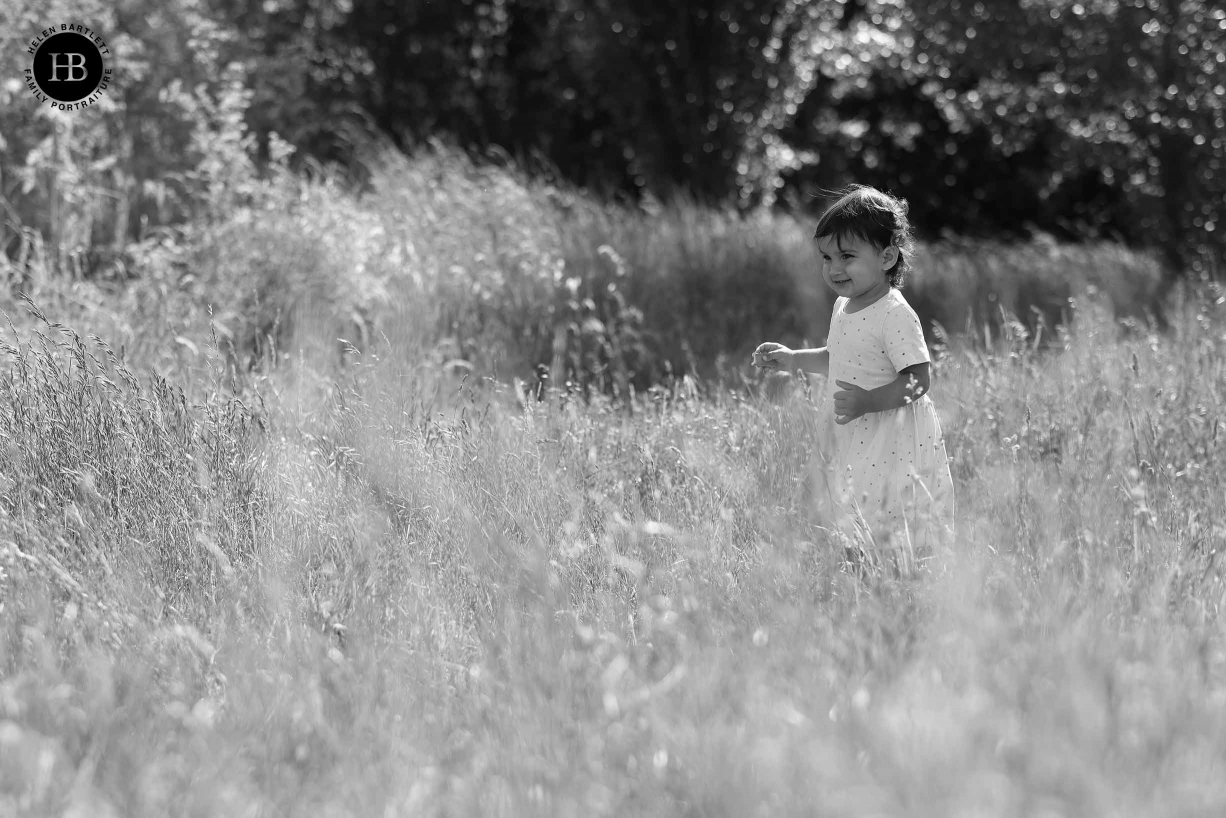
Shallow depth of field and backlighting are always good ways to test the limits of a system and I was very impressed with the results. Canon EOS R5, Canon RF 50mm f/1.2 L USM, f/2, 1/1,000, ISO 100.
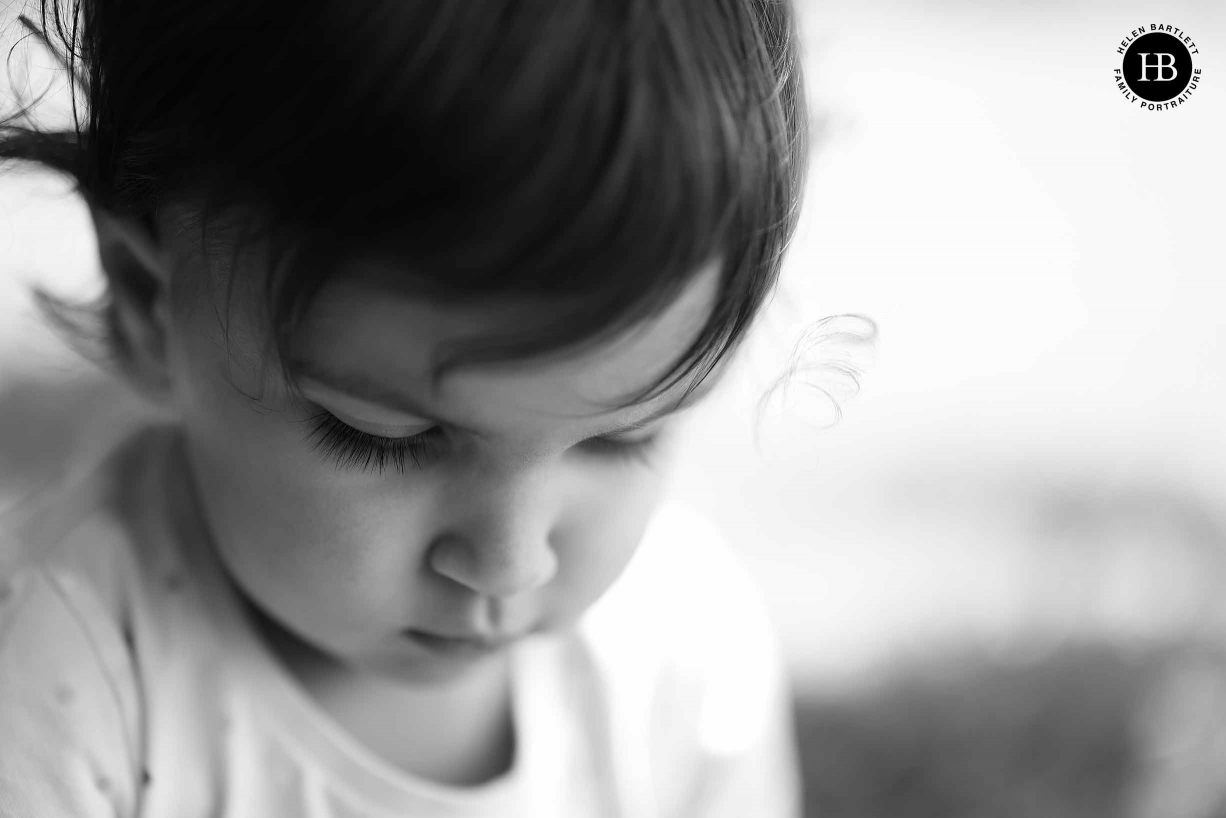
It’s useful to be able to check fine detail in the viewfinder. Look at those curls, sublime! Canon EOS R5, Canon RF 50mm f/1.2 L USM, f/1.2, 1/1,000, ISO 100.

I love this panning shot. Canon EOS R5, Canon RF 50mm f/1.2 L USM, f/2, 1/20, ISO 100.
The 45 megapixel files
Finally, after all this talk about the camera, a word on the output, on the files themselves. As I hope you will have been able to see from the images posted here, the results are stunning. The files are an absolute joy to work with, with incredible tones and the smoothest gradients between them provided by the increased dynamic range in conjunction with the higher resolution.
While I look at the impending storage issues with trepidation (I already have a 64 TB RAID system under my desk…) I know it will be worth it. These files are like nothing I have seen before and will allow me to provide my clients with prints far beyond their expectations. As always when using pre-production cameras, I shot everything in RAW and JPEG as Lightroom is yet to recognise the RAW files from the R5. The straight out of camera JPEGs are perfect. If it wasn’t that I love the safety-net of a RAW file for editing flexibility, I’d be very happy shooting JPEGs from this camera.
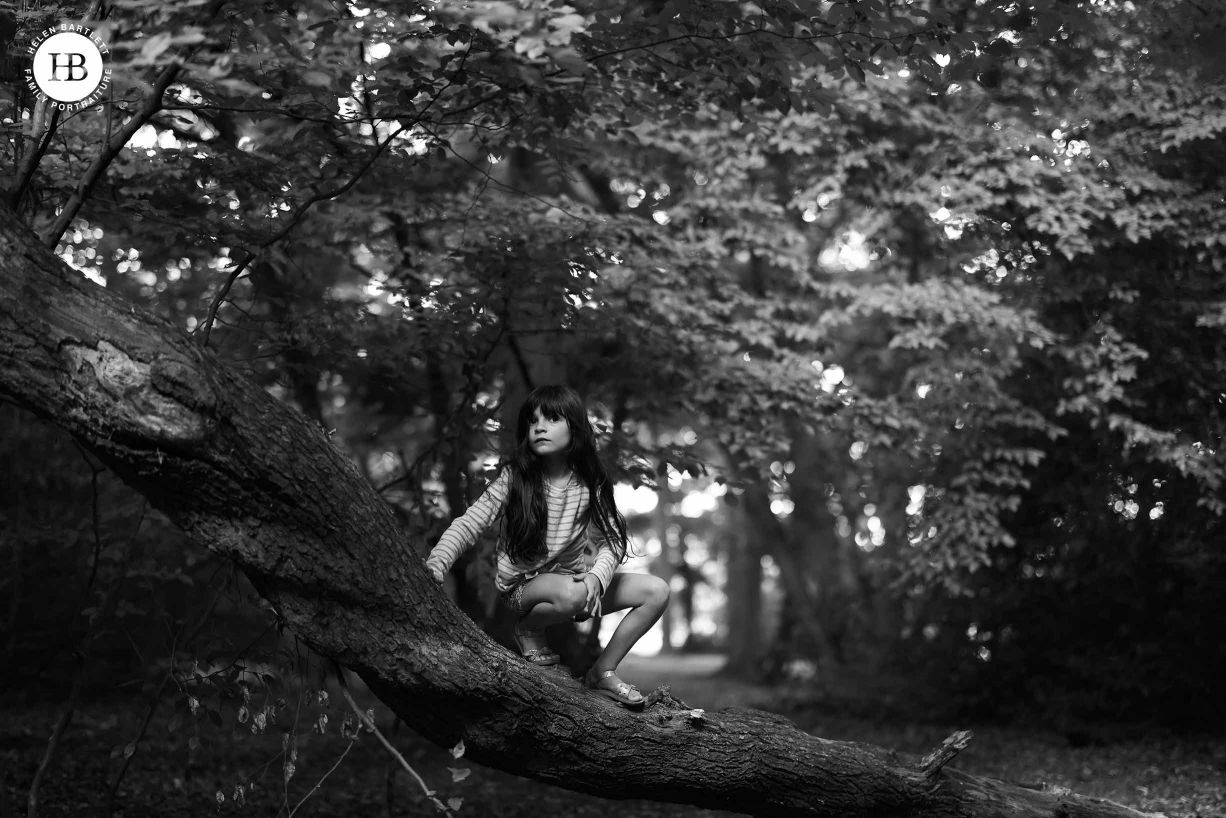
Images like this really show the depth to the files, the dynamic range is fantastic. Canon EOS R5, Canon RF 50mm f/1.2 L USM, f/1.4 1/1,000 ISO 1,250.
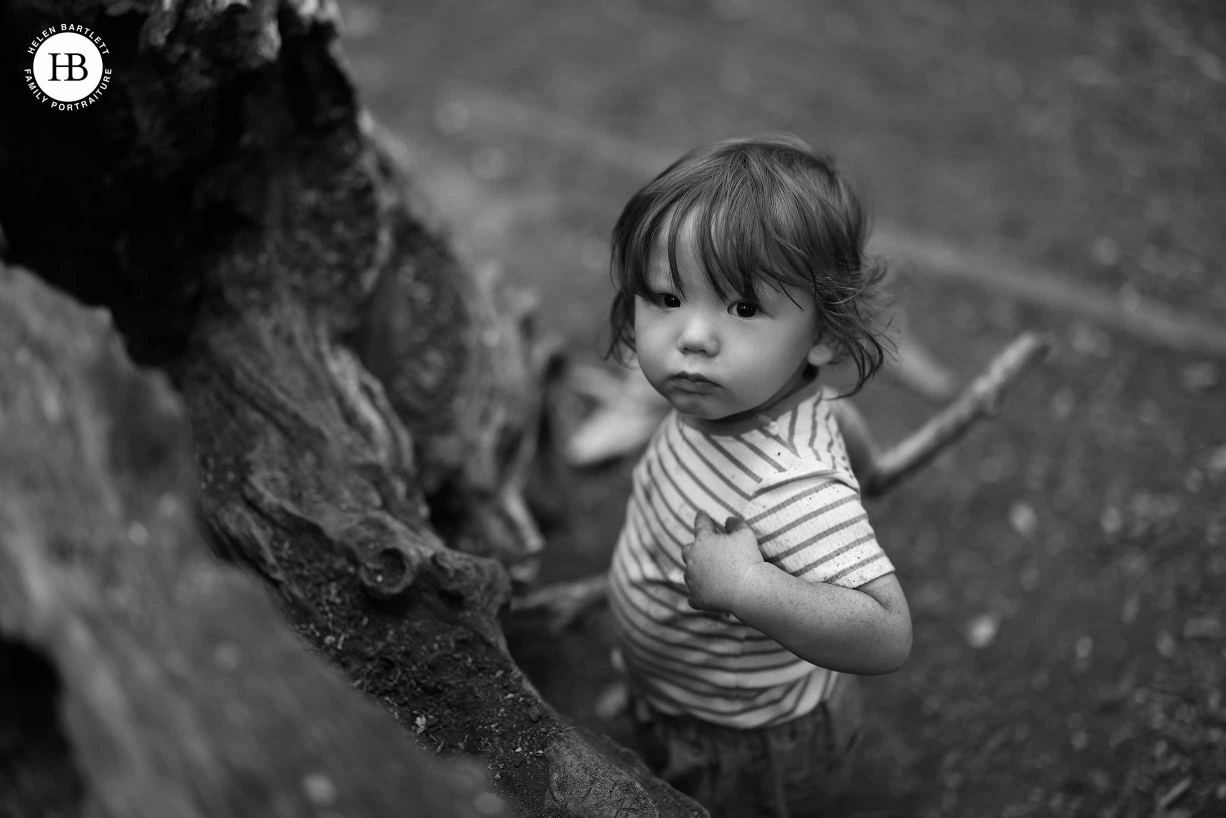
The detail is extraordinary, we can see every grain of sand on the little boy’s arm. Canon EOS R5, Canon RF 50mm f/1.2L USM, f/1.4, 1/320, ISO 250.
Portrait relighting
The last new feature that I want to mention are the new options included for working with Dual Pixel RAW files. Dual Pixel RAW is Canon’s super-duper top-quality RAW format which is absolutely stunning, technically complicated, and I’m not going to pretend to understand (you can read about it on Canon’s website here). But what it means in practical terms is that if you shoot in Dual Pixel RAW, you can do some very clever in-camera processing with the Canon EOS R5.
Canon have included two new functions for use with Dual Pixel RAW files: clarity and portrait relighting.
The clarity function allows you to sharpen the background of an image while keeping the foreground as it is, which could be useful if shooting a person in front of a landscape where the background becomes hazy in the distance.
The portrait relighting function allows you to change the direction of the light hitting the subject after you have taken the picture. You can enter the portrait relighting mode and then adjust both the strength and the direction of the light.
It is slightly slower to shoot Dual Pixel RAW as it’s two pictures at once and so I don’t imagine I’ll use it on a day to day basis, kids move so fast I want maximum speed in my work. But it’s great to know that this feature is there and I imagine Dual Pixel RAW will be fabulous for studio photographers or those who work at a slightly slower pace. I love how Canon are constantly pushing the envelope to provide new tools for us to use.

Portrait relighting in the Canon EOS R5.

It’s great to have the flexibility to use EF lenses as I make the transition to mirrorless. Canon EOS R5, Adaptor, EF70-200 f2.8L IS III USM at 200mm, f/2.8, 1/640, ISO 100.
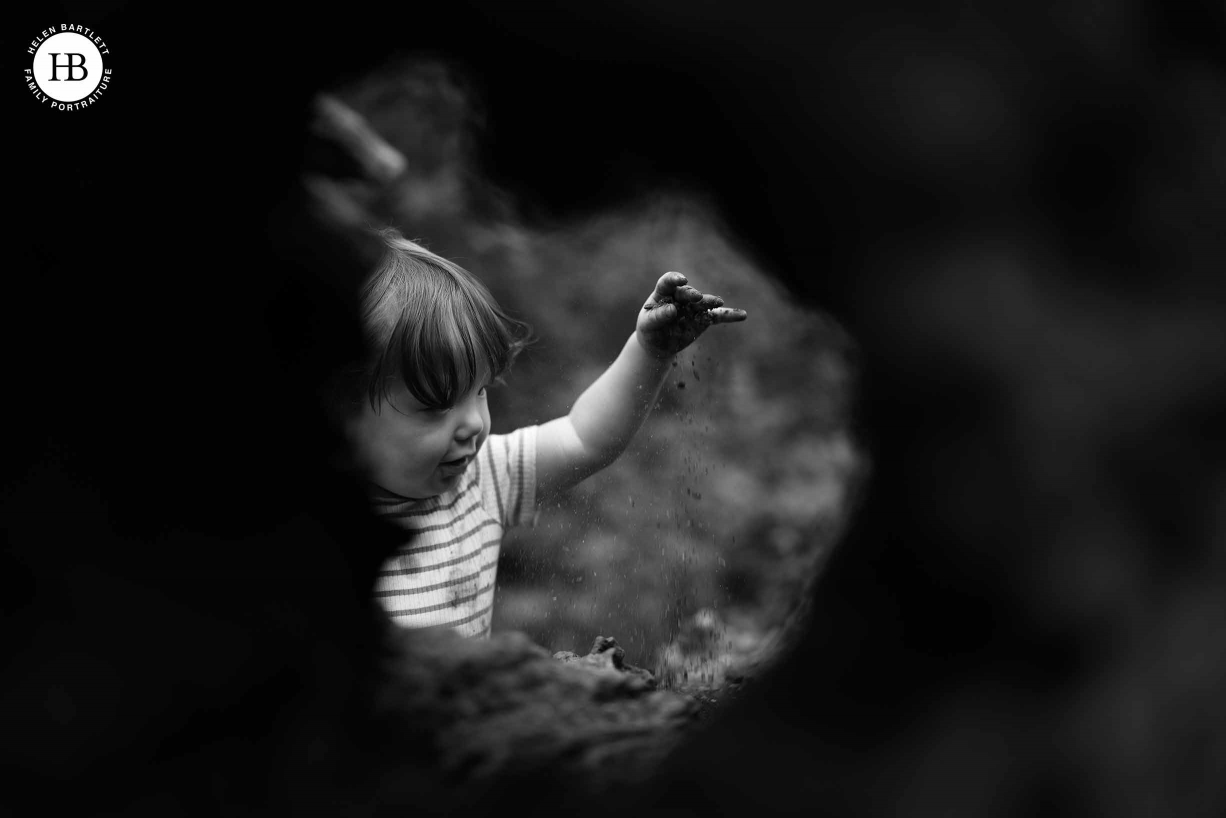
The vari-angle screen helped me make interesting compositions. Canon EOS R5, Canon RF 50mm, f/1.2 L USM, f/1.4 1/320, ISO 250.
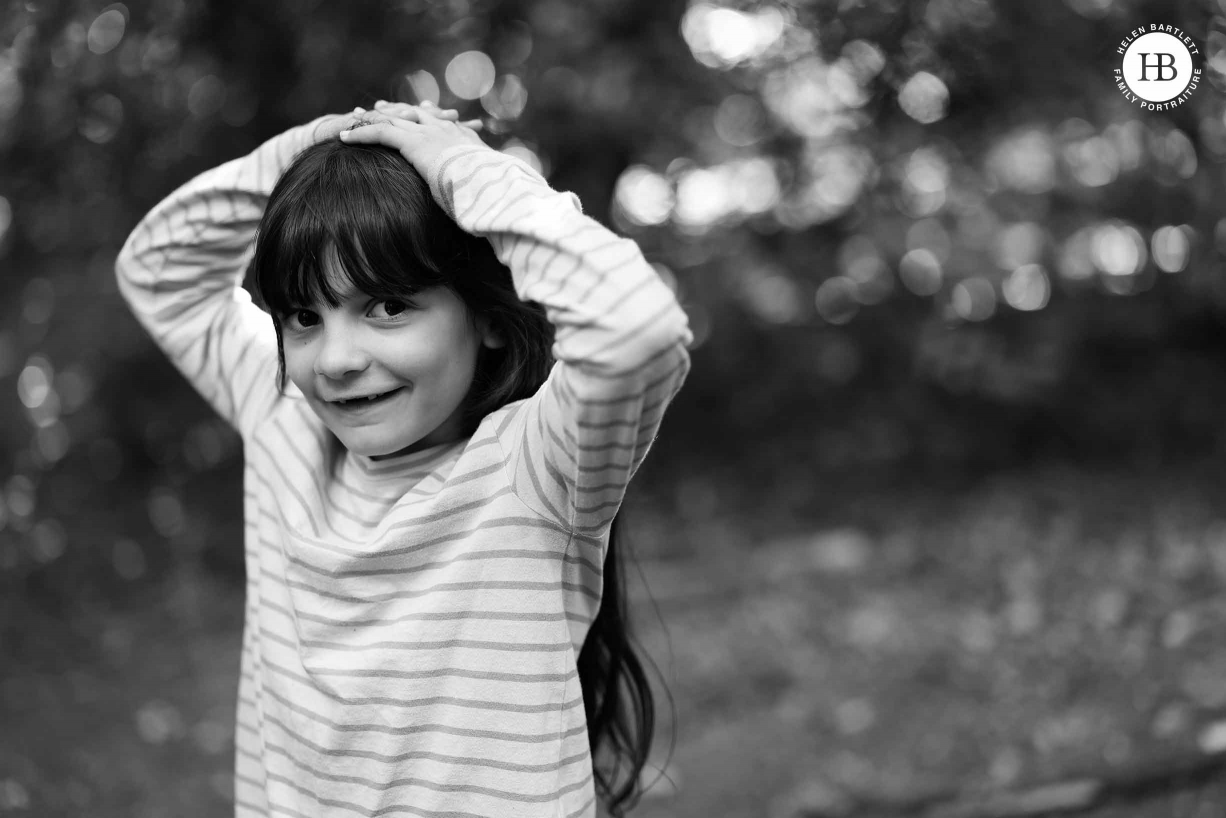
Detail, sharpness, and beautiful bokeh. The R5 brings out the best in Canon’s superb RF lenses. Canon EOS R5, Canon RF 50mm f1.2L USM, f/1.6 1/200, ISO 400.
Conclusion
In conclusion, did I love the Canon R5? Yes, I did.
In my EOS R review, I speculated that I might be replacing my EOS 1DX bodies with mirrorless cameras at some point in the future but fully expected that to take at least a couple of camera generations. I had planned to continue with the 1-series outside or for the really active shoots, and reaching for the EOS R when I’m indoors and for my newborn and baby shoots. Using the Canon EOS R5 for a week has completely changed my plans because it’s such an enormous leap forward that I feel compelled to say a fond farewell to my 1-series bodies and swap to mirrorless.
The full changeover will take time of course. I have a lot of EF lenses and I can’t afford to change everything in one go, particularly not this year when – like all professional photographers – my work has been badly affected by the COVID-19 pandemic. But I will be switching systems. I’ll change my cameras first and the lenses will follow. I already have the sublime RF 50mm f1.2L and the wonderful and versatile RF 35mm f1.8, and with the brilliant adaptor my EF lenses will still do me proud for years to come. I imagine it won’t be long until an RF 85mm finds its way into my bag, here’s hoping there’s a busy summer ahead.
The improvements in file size and quality with the increased dynamic range and better handling of low light means better prints for my clients. The phenomenal autofocus, the in-body image stablisation, and the ergonomics of this new camera will make picture taking a joy. Using this camera will improve my photography and I believe that if you use it it will improve yours too.
The future is mirrorless and with the R5 Canon has firmly positioned itself to lead the way. I can’t wait to go along for the ride!

In some ways I’ll be sad to see them go, but it’s goodbye to my beloved 1-series cameras. Canon EOS R5, Canon RF 50mm f/1.2 L USM, f/1.8, 1/125, ISO 100.
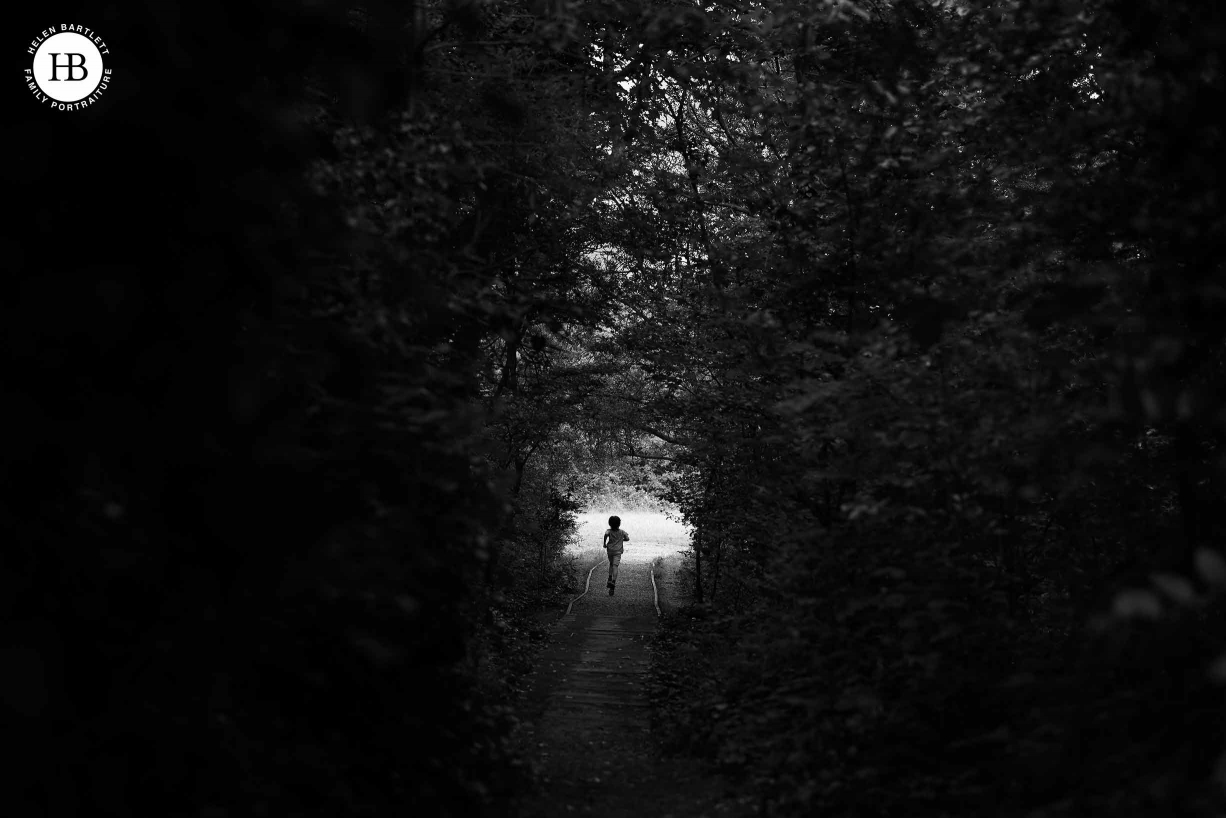
I hope you enjoyed the blog. I’m looking forward to what the future will bring! Canon EOS R5, Canon RF 50mm f/1.2 L USM, f/2, 1/1,250, ISO 320.

